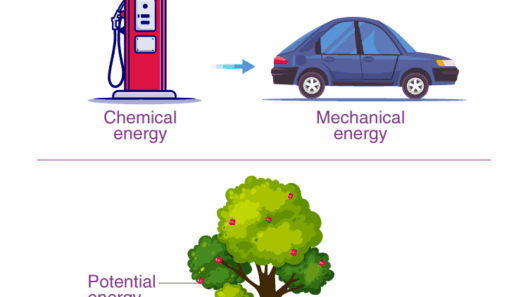The concept of energy conservation is enshrined in the laws of physics, particularly through the First Law of Thermodynamics, which asserts that energy cannot be created or destroyed, only transformed. This foundational principle serves as the bedrock for various scientific, industrial, and ecological paradigms. Understanding the nuances of energy conservation laws reveals both similarities and differences among various frameworks, fostering a deeper appreciation for their implications in real-world applications.
At the core of energy conservation laws is the universal understanding that energy exists in different forms, which include kinetic, potential, thermal, chemical, and nuclear energy. Despite this diversity, a common thread binds these laws: the recognition of energy as a finite entity within a closed system. The laws stipulate that while energy can transition from one form to another—such as chemical energy converting to thermal energy in combustion processes—its total quantity remains consistent. This invariance underscores the importance of efficiency in systems that rely on energy transfers, such as engines, power plants, and even ecosystems.
However, while the First Law of Thermodynamics provides a broad understanding of energy conservation, various disciplines elaborate on this principle with specific regulations and contextual variations. In the field of thermodynamics, for instance, the focus is often on closed systems where no mass transfer occurs. Alternatively, in environmental science, energy conservation laws underscore the need for sustainable practices, concentrating on minimizing waste and enhancing energy efficiency. Herein lies a key similarity: both fields regard the conservation of energy as paramount, yet their applications differ distinctly based on context.
The distinction between mechanical and biological energy conservation laws illustrates another layer of complexity. Mechanical systems obey classical mechanics, where energy conservation can often be mathematically quantified through equations of motion and work-energy principles. Conversely, biological systems introduce additional factors such as metabolic pathways, entropy, and the intricacies of biotic interactions. For example, in ecosystems, energy flows from producers to consumers, with energy being dissipated as heat at each trophic level. This divergence in the application of energy conservation emphasizes the need to account for ecological interdependencies, which is often overlooked in purely mechanical contexts.
Moreover, the distinction extends further into social and economic realms, where policy frameworks, regulations, and incentives play a critical role in actualizing energy conservation. Governments worldwide recognize the need for legislative measures to uphold energy conservation principles feasibly. For instance, renewable energy mandates and energy efficiency standards serve to institutionalize the tenets of energy conservation within societal frameworks, encouraging businesses and citizens alike to adopt more sustainable practices. This policy-oriented perspective underscores the societal responsibility to uphold the conservation laws, reinforcing the notion that while scientific laws remain stable, their application in human contexts is subject to variability and change.
Additionally, energy conservation laws intersect with a growing emphasis on sustainable development, reinforcing the necessity for a paradigm shift in how societies harness energy resources. With climate change and environmental degradation presenting significant threats, integrating energy conservation into urban planning, transportation, and consumer behavior has never been more critical. Here, a synergy emerges between scientific principles and societal practices, demonstrating that while the laws of energy conservation remain static, their interpretation and application are dynamic, dictated by contemporary exigencies.
Energy conservation also plays a vital role in global discussions regarding energy security and economic sustainability. Countries rich in fossil fuels have historically prioritized extraction and consumption, often neglecting the implications of excessive energy use. In contrast, nations investing in renewable resources and innovative technologies unveil an alternative trajectory toward energy independence and environmental stewardship. This dichotomy in approaches further cements the relevance of energy conservation as a pivotal tenet in navigating the complexities of global energy dynamics.
Understanding the differences in how energy conservation is conceptualized within various frameworks generates a holistic comprehension of its role across disciplines. For instance, in mechanical engineering, energy conservation laws guide the design of efficient systems that minimize energy loss and enhance performance. In contrast, fields like education and public awareness campaigns emphasize the importance of individual actions and lifestyle changes that can collectively contribute to energy conservation at a macro level. As such, crafting a comprehensive narrative around energy conservation necessitates multidisciplinary collaboration that recognizes both the scientific rigor and the practical applications inherent in diverse contexts.
To summarize, the laws of energy conservation provide a cohesive foundation upon which various disciplines build their understanding and practices. While similarities exist—most notably the universal acknowledgment of energy as a finite entity—the differences emerge through disciplinary perspectives, contextual applications, and policy implications. Ultimately, the intersection of science, society, and sustainability manifests as a critical dialogue that continues to shape our relationship with energy and the environment, underscoring the imperative for concerted efforts towards conservation and innovation in fostering a sustainable future.








